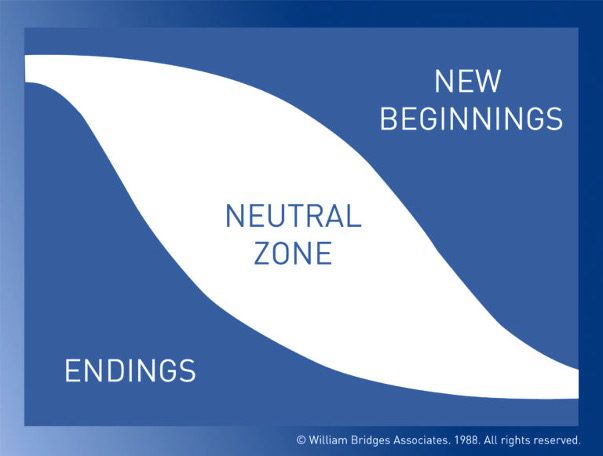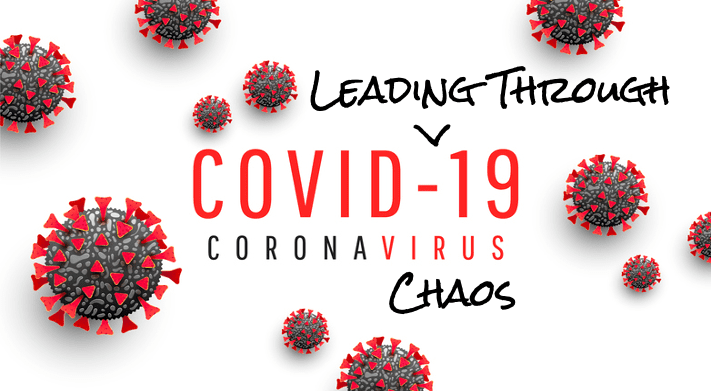Recording of L2L Webinar with Sam Reese, CEO of Vistage Worldwide
At the end of August, I was joined by Sam Reese, CEO of Vistage Worldwide for a discussion on where leadership is going and what great leaders are doing to inspire action and engagement.
Following are my key takeaways from our discussion.
- Develop your people and then work hard to keep them. Sam was given advice early in his career that as leaders our primary job is to develop others so that they become so capable and talented that your competition wants to recruit them away. Then we have to work hard to keep them by creating the environments where they can continue to grow and develop into better versions of themselves.
- Lead with vision, mission and purpose while keeping “purpose” out front and center every day. Purpose, or why we do what we do, drives engagement and helps people connect their contributions to the bigger agenda. Sam shared an example of keeping purpose out front. To this day he starts his team meetings by asking his team members to share a story of how they helped their customers.
- Embrace ambiguity and uncertainty. It’s easy to get pulled away from our vision when we think it’s our job to remove all ambiguity. Things are changing so quickly that we need to be okay with not knowing all the answers. What we thought was the right answer or course of action yesterday may be the wrong answer today.
- Command and control leadership is dead. People don’t want to be led by leaders who direct and control things. We need to hear from our team members and learn to listen intently. We also need to put our egos aside and avoid driving our own agendas.
- Lead with the right question rather than the right answer. Many of us have been promoted because we know the right answers. As we take on bigger roles, we can’t know everything so we have to ask more than tell and rely more heavily on those who are closest to the action.
- Practice vulnerability and transparency. Vulnerability can be seen as weak, even risky when leaders are with other leaders or in a competitive situation. When we don’t open up as to what’s really going on we invite others to do the same; and when we create cultures where it’s not safe to address the real issues, that’s when you need to worry.
- Hold people accountable and jump into the details when needed.One way to hold people accountable is to have regularly scheduled weekly 1:1 meetings with each of your team members. Sam recommends we start our 1:1 meetings with these 3 simple questions, “What’s going well?” “What’s not going well?” and “Where do you need my help?”
Check out the full interview by clicking the video below.
Leadership in a Post-Covid Era
When Covid hit, we were writing and talking about the “new normal” and that we were in, as William Bridges calls, the “neutral zone” leading to new beginnings. I referenced Bridges framework to help our clients understand what was going on in both their personal and professional lives. As the mask mandates continue to go away and we head back to work, it’s helpful for us as leaders to ponder the question of whether leadership has changed or perhaps not?
We have been asking ourselves the same question. Has anything changed permanently? Are we back to the old normal or is there really a new normal? To answer this question, we did a “lit search” to identify what is trending in the workplace – what people are talking about? What will be the competencies, skills, practices that we need to embrace and develop to drive our success? Her research may surprise you. Top of the list? Empathic leadership.
#1: Empathic Leadership
Empathy and support of others continues to be on the top, particularly when the context in which people are working includes high levels of complexity, uncertainty, and change. I don’t know about you, but I think we can all agree that things have gotten more complex, uncertain, and unpredictable. One of the skills noted was the practice of curiosity – which is foundational to creating cultures of empathy.
Other findings showed that empathy is not only about emotional empathy (understanding the struggles, challenges of managing a home front on top of work), but empathy is also about cognitive empathy which is really about engaging others to help us see things differently. To help us view problems through a different lens, evaluate threats that we may not see, etc. Another practice to develop greater levels of empathic leadership included learning how to give direct, clear and constructive feedback while having a greater level of awareness in how the feedback is being received; and then making it safe for team members to have healthy debate in service to the best possible solution.
#2: Empowering Teams through Purpose and Clarity
Ranked as #2 is leading in a way that empowers teams by having a clear purpose (why we’re doing what we’re doing) and being clear on expectations. The ability to communicate clear expectations and link those expectations to why they are important is key. Another practice that showed up is the team leader’s ability to communicate the value proposition underlying the work that is being done to ultimately inspire, energize, and create a sense of pride. This last practice was a big driver of engagement and increased performance.
#3: Developing Resilient Organizations
Coming in at #3 was resilience. Given all that we’ve been through, this is not a big surprise. What surfaced was the importance of leaders managing their own stress and adapting to challenging, “overloaded” environments. For this to happen, leaders need to increase their levels of self-awareness, so they are more aware of when they kick into overdrive and/or demonstrate reactive tendencies. Another aspect of developing resilience was connected to the leader’s ability to balance optimism and realism while acknowledging challenges and focusing on where the business is going.
And so, as we continue our journey into this new normal, we all need to step back and evaluate what we need to do differently. Perhaps our pre-pandemic leadership playbooks may need to have a few pages added.
Structurally Refocusing To Overcome Busyness
First, a tired but true acknowledgment: This year has been hard. We’ve adapted to tough circumstances despite profound losses. And yet, I feel a sense of hope as vaccines make their rounds and we inch towards a life free of COVID-19’s burdens. Things are looking up.
Yet organizations are still very much in the residual shadows of the virus. Perhaps physical offices are reopening, but a palpable uncertainty remains. Employees are jittery about the economy and the status of their jobs. What will the post-COVID work environment look like? Perhaps most importantly, leaders are uncertain how to effect positive change. Indeed, change is a tough pitch at a time when “normalcy” is basically all we’ve wanted for the last 13 months.
When employees and leaders are burdened by uncertainty and doubt, they usually fall back on a harried form of busyness without purpose. Leaders focus on “urgent” but not important items. The days feel full but directionless. If this sounds familiar, you’re in good company. But it’s time to structurally refocus.
Most organizations have finalized their strategic plan for the upcoming year and have identified their strategic goals or, what Jim Collins has aptly named, their “Big Hairy Audacious Goals” (“BHAGs”). As the phrase implies, these BHAGs can be intimidating, and because they have longer timelines, they often get lost in the day-to-day. Before you launch into Q2, it’s time to do a strategic reset and reintroduce structure to help you focus.
Step 1: Do a Mental Download
I suggest blocking out some time and writing down everything floating around in your head on sticky notes (a Word doc works too).
Step 2: Apply a Structural Approach To Help You Organize
Then, zoom out and implement an objective-based structure. I recommend adopting the “OKR” methodology championed by John Doerr in his book, Measure What Matters. Here are the basics: Identify your Objective, which is “what” you and/or your team want to achieve. You may have multiple objectives that support your larger BHAG. Once your Objective is identified, then shift your focus to the Key Results, which are “specific, time-bound, and measurable” progress markers for achieving your Objectives. Here’s an example:
BHAG: Become a more customer-driven organization
Objective 1: Use data-driven insights to better understand the customer’s voice
Key Results:
- Sales to conduct 25 interviews with accounts that we have lost in the past 12 months
- Marketing to launch a customer pulse survey to over 1,000 end-users
- Senior team to conduct five in-depth meetings with members of our customer advisory board
Objective 2: Increase sales revenue by 15% in Q4
Key Results:
- Hire 7 new sales reps for the sales team by the end of Q2
- Generate 10K leads and convert 35% into new sales opportunities by the end of Q3
- Reduce closed/lost opportunities from 100 to 25
Step 3: Try to Place Your To-Do’s into the BHAG Framework
See if you can place your sticky notes (or copy and paste your Word bullets) into the BHAG and OKR structure identified above. If you find it hard to place your to-do’s within the framework, you may have fallen prey to busyness without direction.
So, if you’re feeling overwhelmed or have lost sight of the bigger picture, see if you can brain dump, zoom out, and structurally refocus. You will end your week with a greater purpose and focus for what matters.
COVID’s Silver Linings: Five Things Teams Want to Take with Them to the New Normal
This weekend I sat outside at my favorite local brewery and was immensely grateful that things were beginning to look like pre-COVID times.
And yet, having facilitated countless Zoom call “check-ins” with our leadership cohort groups, it’s also apparent that many of them don’t miss a lot of things that were part of our everyday life pre-COVID. As a follow up to the discussion on Leading Through Chaos, here are some of COVID’s silver linings teams want to carry forward:
Better balance. Some of us have seen more of our families in the last three months than we did in the entire year prior. This time to come together with family has been a completely unexpected gift for many. Carving out time for family can be hard, and yet my hope is we will find ways to achieve this better balance going forward.
Deeper team relationships. Many leadership cohorts were grateful for stronger personal connections among colleagues. Indeed, despite the virtual distance, we’ve connected with our teams more than ever during this pandemic. I’ve heard numerous times how much people have appreciated their boss and colleagues calling in to check on them and their families. This connection among teams not only makes for happier employees but also drives team cohesion and performance.
Quicker decision making. We’ve had to make decisions quickly with imperfect and incomplete information. We’ve had to push the button when we weren’t positive it would work. And surprisingly, many of us have experienced better results. Sometimes we get so bogged down in analysis that we unnecessarily bottleneck our decision-making process.
Cross-functional collaboration. This one I didn’t expect, but teams have described more cross-functional collaboration and cooperation. People are jumping in to help their colleagues and working more collaboratively toward common goals, often moving beyond the confines of their job titles to drive results.
Focusing on the essentials. The challenge (and beauty) of a crisis is that it forces companies to focus on the things necessary to move the business forward. For leaders, this can also mean less micromanagement and greater autonomy for employees. Ironically, this bottom-up empowerment model often drives better results than when managers feel like they can handle it all.
As businesses reopen and life seems to revert to the pre-COVID days, we also know that the world-and business broadly-is an undoubtedly different landscape than it was February. And while it’s easy to slip into our old ways, we need to reflect on what has worked well in the COVID environment. While the weeks at home without restaurants and gyms were a challenge, there were also many silver linings.
We love hearing from our teams; if you would like to share more about your COVID experiences and silver linings, please comment below.
Leading Through Chaos: Embracing the Neutral Zone in Transitions
As we’re starting to move from COVID-19 crisis management and stay-at-home orders, the conversations are shifting-they are more hopeful and encouraging, but cautious. Transitioning to the new normal will undoubtedly be a slow process. And questions abound as to what the “new normal” will look like at home, at our jobs, in our communities, and for our world more broadly.
As we’ve been working with leaders to help them navigate this sea of uncertainty, Bridges’ Transitions Model has provided a particularly helpful framework. Around for almost thirty years, the model helps leaders and organizations understand how to transition from old paradigms and mindsets to new models and ways of being. The model is insightful because it talks about transitions rather than changes. Changes are external and often beyond our control; they are situations and events. Transitions, on the other hand, are internal and within our control; they are how we react to changes. COVID-19 is a (major) change-how will we transition?

Applying Bridges’ Transition Model to the COVID-19 crisis, most of us are now in the neutral zone. We understand there are changes, and the novelty of the situation has started to wear off. We are looking ahead and asking questions. But while there may be a tendency to rush straight through to the end zone, the neutral zone actually poses an opportunity for innovation and thinking anew about how we work and live.
For leaders today, we should use this neutral zone as a time to reflect, explore, and be curious about our prior ways of doing things. Are there opportunities to improve, innovate, and adjust? It is no coincidence that some of the most cutting-edge companies have birthed new creations through chaos in their transition to a new normal.
So, if you’re working with teams, embrace the neutral zone as a field of opportunity to explore new options. Searching for new opportunities may not mean a complete restructuring of your business. It may be as simple as small changes to drive customer value or boost efficiency, or even resolving to do more of what you love.
If anything is certain with COVID-19, it’s uncertainty. Let’s not accelerate too quickly toward our new beginnings. We may miss a golden opportunity to bring something really amazing into the world, our organization, our teams, or our families.
To learn more about making the most of change, you can check out William Bridges’ book, Managing Transitions on Amazon or find a helpful summary here.






